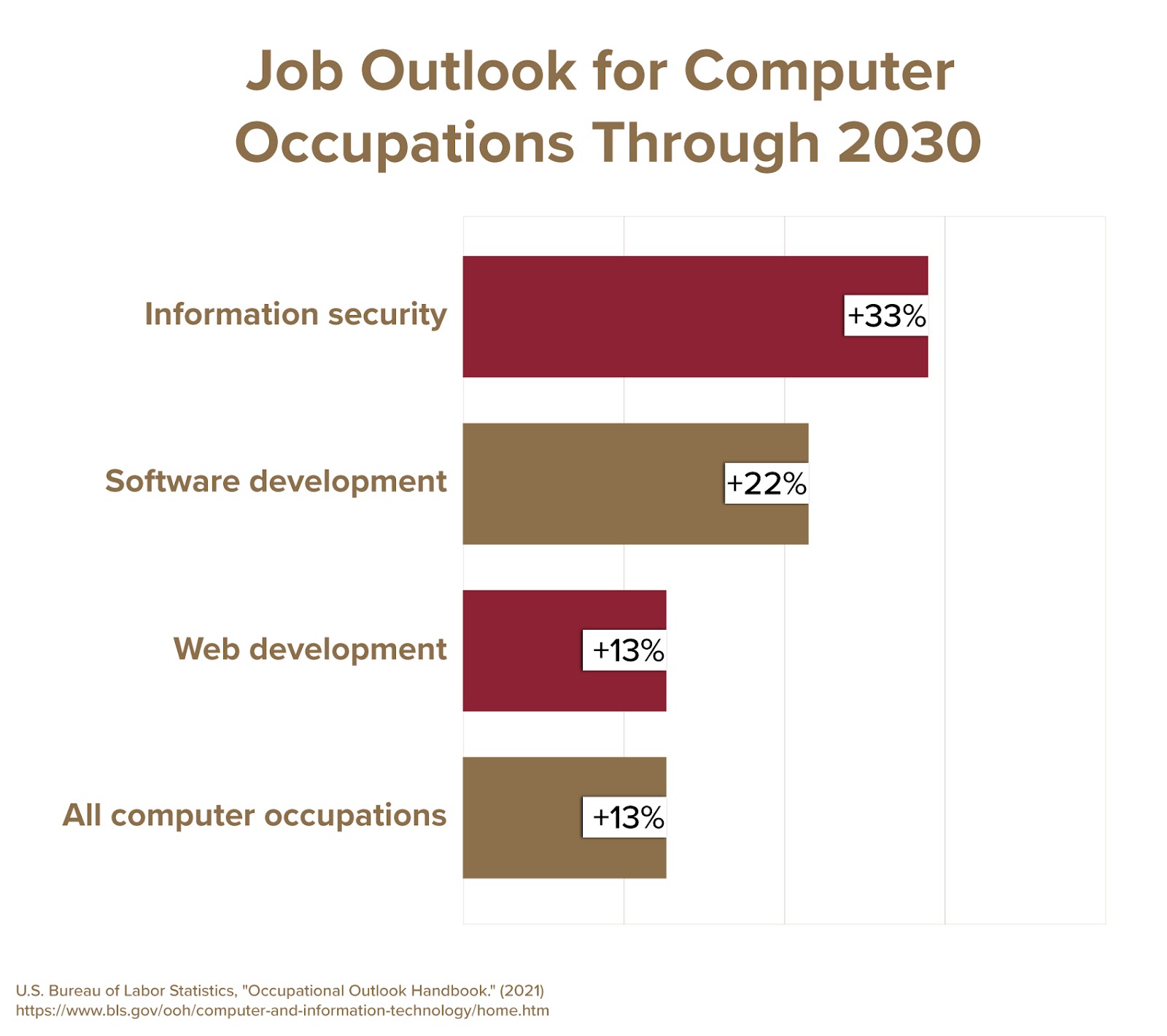Computer programmers are behind every digital device we use today. Programmers built your smartphone operating system and the apps you use on them. A developer created your favorite Instagram filter. Wearable health monitors, smart home security systems, and digital currencies all began with a programmer who had an idea and knew how to code.
To learn computer programming is to make yourself more marketable, more mobile, and more competitive in a digital society. How essential will programmers continue to be to the worldwide workforce? The World Economic Forum (WEF) stated in 2020 that we had embarked on the “Fourth Industrial Revolution,” in which emerging technologies such as cloud computing, big data, and e-commerce have transformed the ways we live and work.
The WEF’s 2020 Future of Jobs Report found that the three roles with the highest future demand will be data analysts and scientists, AI and machine learning specialists, and big data specialists. What do these careers have in common? They require expertise in computer programming.
Programming skills can expand your career prospects dramatically. The U.S. Bureau of Labor Statistics (BLS) projects all computer occupations to grow by 13 percent through 2030. Among those occupations, information security (33 percent), software development (22 percent), and web development (13 percent) project significant opportunities.

Now that you understand the marketable value of a programming skill set, you may have questions, such as:
- What are the most in-demand programming languages?
- Which programming language should I learn first?
- What’s the best way to learn programming?
Read on to learn the answers to those questions and more.

 Live Chat
Live Chat
